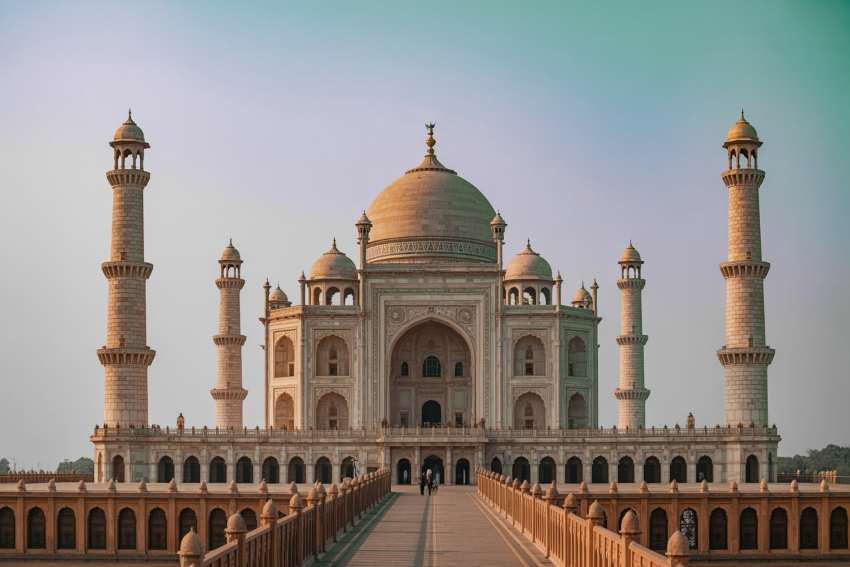How Global Trends are Shaping Travel and Tourism in India: A New Look at the Future of Travel Industry
Global trends in digitalization, sustainability, wellness, experience and outbound travel are transforming India’s tourism sector in unprecedented ways.
In recent years, India’s travel and tourism sector has been deeply influenced by a confluence of global trends that are shifting how destinations are marketed, how travellers choose experiences, and how governments plan infrastructure. These developments are having profound effects on both domestic and international travel involving India. A fresh perspective reveals not only what is changing, but how India can navigate opportunities and challenges in the coming decade.
1. Growth of Outbound and Domestic Travel Driven by Rising Incomes
One of the most significant shifts is the surge in outbound travel from India, accompanied by rapid expansion of internal tourism. As incomes rise and connectivity improves, more people are traveling abroad but also exploring previously under-visited regions within India. Tier II and Tier III cities are contributing heavily to growth in both inbound tourism (foreigners) and domestic travel. The increasing number of direct flight routes and relaxed visa policies for certain destinations further accelerate outbound travel. Simultaneously, less travelled domestic locations are becoming desirable for travellers seeking unique experiences rather than typical tourist circuits. By 2030, spending on travel by Indians is projected to rise severalfold compared to just a few years earlier.
Effect on travel & tourism: Destinations in India must adapt their offerings for diverse travellers—from budget conscious domestic guests to more demanding outbound travellers. Hospitality infrastructure needs to scale, and marketing must evolve to reach people in smaller towns and newer markets.
2. Rising Demand for Experiential and Purposeful Travel
Travellers today are looking beyond landmarks and photo‑ops. There is a strong preference for experiential travel—immersive cultural experiences, participation in local life, traditional culinary workshops, off‑beat festivals, and spiritual retreats. Wellness, health, and well‑being are becoming core motivations for many travellers. Yoga, Ayurveda, and holistic healing are rising in demand on the world stage, making India, with its rich AYUSH heritage, a global hub for wellness tourism.
New perspective: Indian travel offerings are increasingly evaluated not just by aesthetic or historical value but by how authentic and meaningful they feel. The shift is from “seeing” to “living” the place. For instance, homestays that let travellers cook with local families, community‑led eco‑tours, and retreats with traditional medical systems are replacing generic resort stays.
3. Sustainability as Central Pillar of Future Development
Globally, sustainability has evolved from a niche concern into a driving force across tourism policy, consumer choice, and investment. Indian travellers are more likely to choose eco‑friendly accommodations, support local businesses, reduce waste, and prefer destinations that manage natural resources responsibly. States and private sector actors are responding: eco‑retreats, wildlife safaris with responsible parameters, wellness resorts that emphasize conservation, and attractions that invest in green‐energy infrastructure are gaining ground.
Effect on Indian travel & tourism: Regulations and certifications will become more stringent. Regions known for natural beauty must plan for conservation to avoid overtourism damage. Infrastructure development projects—airports, roads, hotels—need to incorporate sustainable design from the outset. Visitors will expect transparency around environmental impact.
4. Digital Transformation and Smart Travel Experiences
Technology is rewriting the rules of the travel game. Artificial Intelligence, Virtual Reality, Augmented Reality, chatbots, mobile apps, personalized recommendation engines, digital payments, and contactless services are no longer futuristic amenities—they are baseline expectations. Smart tourism initiatives are emerging: virtual tours of heritage sites, smart ticketing, geo‑tagged cultural guides, and tailored itineraries based on a traveller’s preferences and behaviour.
New angle: Not only are travellers using technology to plan and execute trips, but destinations themselves are being digitally “curated”. Government tourism agencies and the private sector in India are investing in digital storytelling (film, streaming, social media content) to create desire for destinations. Brand building through digital media, and establishing online presence that conveys authenticity and rich experience, is becoming essential.
5. Blurring of Business, Leisure, and Work-Travel Boundaries
A trend often called “bleisure” travel—combining business and leisure—or remote‑work travelling, is growing globally. Individuals are extending business trips to include holiday time or are working remotely from locations that double as travel destinations. India, with its many scenic spots, lower cost of living in many regions, and improving internet connectivity, is in position to benefit from this hybrid model. The concept of slow travel—spending more time in one place to “reset”—is gaining importance.
Effect on tourism infrastructure: Beyond luxury hotels in major cities, there is increasing demand for longer‑stay rentals, co‑working spaces, reliable connectivity in remote or scenic locations. Homes and guest houses in hill stations, beaches or cultural towns will need to adapt services to appeal to travellers who need both leisure and work amenities.
6. Investment, Branding, and Public‑Private Collaboration
To capitalize on these trends, India is witnessing stronger involvement from private sector and increased investment in tourism infrastructure. Global hotel chains are entering into smaller cities, offering both mid‑range and luxury options. Public‑private partnerships are being used to build facilities, plan circuits, and manage destinations. Branding efforts (including using storytelling in films, television, streaming) aim to project India’s heritage, natural diversity, wellness culture, and offbeat locations to global audiences.
New viewpoint: Rather than promoting individual cities or monuments, branding is increasingly thematic—wellness, spiritual heritage, wellness corridors, eco‑tourism zones. This allows diversification of India’s tourism appeal beyond the usual ‘Golden Triangle’ or major beach resorts. Infrastructure investment is not only about hotels, but about more robust ground connectivity, cleaner airports, enriched digital infrastructure, and better services in less urban places.
7. Challenges and Balancing Acts
While the opportunities are immense, several challenges accompany the changing landscape:
- Overtourism and environmental degradation in fragile ecosystems and heritage‑sensitive zones. Without careful regulation, tourism growth can degrade what makes a place special.
- Quality of service consistency in remote and smaller locales. Training, staffing, hygiene, safety standards often lag in newer tourism areas.
- Affordability and inclusivity. As prices rise in desirable destinations, budget travellers may be priced out. There is a risk of travel becoming a luxury rather than accessible for wider population segments.
- Infrastructure gaps: Reliable power, internet, waste disposal, transport remain weak in many rural or remote tourism areas.
- Regulatory and policy alignment: Ensuring that environmental protections, land use laws, and investment incentives are harmonised at central, state, and local levels.
8. India’s Strategic Advantages and Future Pathways
India holds multiple inherent strengths that align with future travel trends:
- Rich cultural and spiritual heritage, diverse landscapes from mountains to beaches, villages to deserts.
- Traditional systems of wellness (Yoga, Ayurveda) that are globally sought after.
- Large, young population increasingly digital, curious, with disposable income.
- Government focus on developing tourist destinations, improving ease of travel, visa reforms, and support for infrastructure.
To harness global trends, the sector may benefit from:
- Encouraging remote work hubs in scenic locations with proper amenities and regulations.
- Developing thematic travel circuits (wellness, heritage, nature, culture) that promote longer stays.
- Strengthening sustainable practices—waste management, renewable energy adoption, conservation.
- Leveraging content creation and storytelling as marketing tools.
- Focusing on inclusive growth so that smaller towns, under‑served regions, and local communities also benefit.
Conclusion
The evolution of global travel and tourism trends is re‑sculpting how India positions itself in the world tourism map. The interplay of digitalization, sustainable practices, wellness, experiential travel, and expanding outbound mobility demands a rethink of how destinations are built, promoted and experienced. India’s tourism sector stands at a junction where aligning with these trends can yield strong economic, social, and environmental dividends—but doing so wisely, equitably, and sustainably will make the difference. A new paradigm is emerging: travel is no longer just sightseeing, but an immersive, purposeful journey shaped by global forces and local authenticity.
The post How Global Trends are Shaping Travel and Tourism in India: A New Look at the Future of Travel Industry appeared first on Travel and Tour World


Comments and Responses
Please login. Only community members can comment.